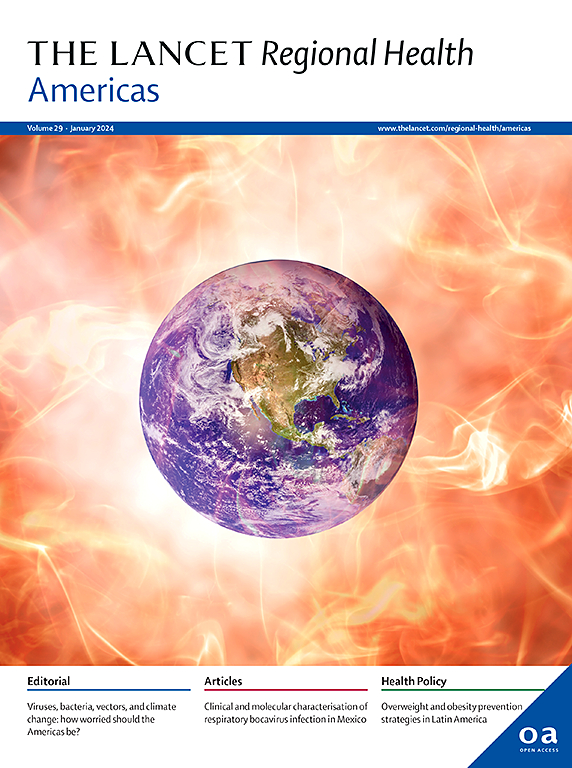Women's attitudes towards intimate partner violence in Guyana: a population-based study
IF 7
Q1 HEALTH CARE SCIENCES & SERVICES
引用次数: 0
Abstract
Background
Intimate partner violence (IPV) against women is a global health issue and a breach of human rights. However, the literature lacks understanding of how socioeconomic and geographic disparities influence women's attitudes toward IPV in Guyana over time. This study aimed to assess trends in women's attitudes about IPV in Guyana.
Methods
Data from three nationally representative surveys from 2009, 2014 to 2019 were analysed. The prevalence of women's attitudes about IPV was assessed, specifically in response to going out without telling their partners, neglecting their children, arguing with their partner, refusing sex with their partner, or burning food prepared for family meals. A series of stratified subgroup analyses were also completed. We assessed trends in IPV using the slope index of inequality (SII) and the concentration index of inequality (CIX). We used multilevel mixed-effects logistic regression to assess factors associated with women's attitudes justifying IPV.
Findings
The prevalence of women's attitudes justifying IPV for any of the five reasons declined from 16.4% (95% CI: 15.1–17.8) in 2009 to 10.8% (95% CI: 9.7–12.0) in 2019. Marked geographic and socioeconomic inequalities were observed among subgroups. The SII for any of the five reasons decreased from −20.02 to −14.28, while the CIX remained constant over time. Key factors associated with women's attitudes about IPV were area of residence, sex of the household head, marital status, respondent's level of education, wealth index quintile, and the frequency of reading newspapers/magazines.
Interpretation
From 2009 to 2019, Guyana was able to reduce women's attitudes justifying IPV against women by 34.1% and shortened subgroup inequalities. However, the prevalence remained high in 2019, with persisted inequalities among subgroups. Effective strategies, including the use of media to raise awareness, promotion of community-based approaches, and educational campaigns focusing on geographic and socioeconomic disparities, are essential for continuing to reduce the prevalence of IPV and associated inequalities.
Funding
The study was funded in part by the National Institutes of Health, Fogarty International Center grant number D43TW012189.
圭亚那妇女对亲密伴侣暴力的态度:基于人口的研究
背景针对妇女的亲密伴侣暴力(IPV)是一个全球性的健康问题,也是对人权的侵犯。然而,文献缺乏对圭亚那社会经济和地理差异如何随着时间的推移影响妇女对 IPV 的态度的了解。本研究旨在评估圭亚那妇女对 IPV 的态度趋势。方法分析了 2009 年、2014 年和 2019 年三次全国代表性调查的数据。评估了妇女对 IPV 的普遍态度,特别是对瞒着伴侣外出、忽视孩子、与伴侣争吵、拒绝与伴侣发生性关系或烧毁为家庭聚餐准备的食物的态度。我们还完成了一系列分层分组分析。我们使用不平等斜率指数(SII)和不平等集中指数(CIX)评估了 IPV 的趋势。我们使用多层次混合效应逻辑回归来评估与妇女为 IPV 开脱的态度相关的因素。研究结果妇女为 IPV 开脱的态度从 2009 年的 16.4%(95% CI:15.1-17.8)下降到 2019 年的 10.8%(95% CI:9.7-12.0)。亚群体之间存在明显的地域和社会经济不平等。五种原因中任何一种原因的 SII 从-20.02 降至-14.28,而 CIX 随时间变化保持不变。与妇女对 IPV 的态度相关的主要因素包括居住地区、户主性别、婚姻状况、受访者教育水平、财富指数五分位数以及阅读报纸/杂志的频率。然而,2019 年的流行率仍然很高,亚群体之间的不平等持续存在。有效的策略,包括利用媒体提高认识、推广基于社区的方法以及开展以地理和社会经济差异为重点的教育活动,对于继续降低 IPV 的流行率和相关的不平等现象至关重要。
本文章由计算机程序翻译,如有差异,请以英文原文为准。
求助全文
约1分钟内获得全文
求助全文
来源期刊

Lancet Regional Health-Americas
Multiple-
CiteScore
8.00
自引率
0.00%
发文量
0
期刊介绍:
The Lancet Regional Health – Americas, an open-access journal, contributes to The Lancet's global initiative by focusing on health-care quality and access in the Americas. It aims to advance clinical practice and health policy in the region, promoting better health outcomes. The journal publishes high-quality original research advocating change or shedding light on clinical practice and health policy. It welcomes submissions on various regional health topics, including infectious diseases, non-communicable diseases, child and adolescent health, maternal and reproductive health, emergency care, health policy, and health equity.
 求助内容:
求助内容: 应助结果提醒方式:
应助结果提醒方式:


